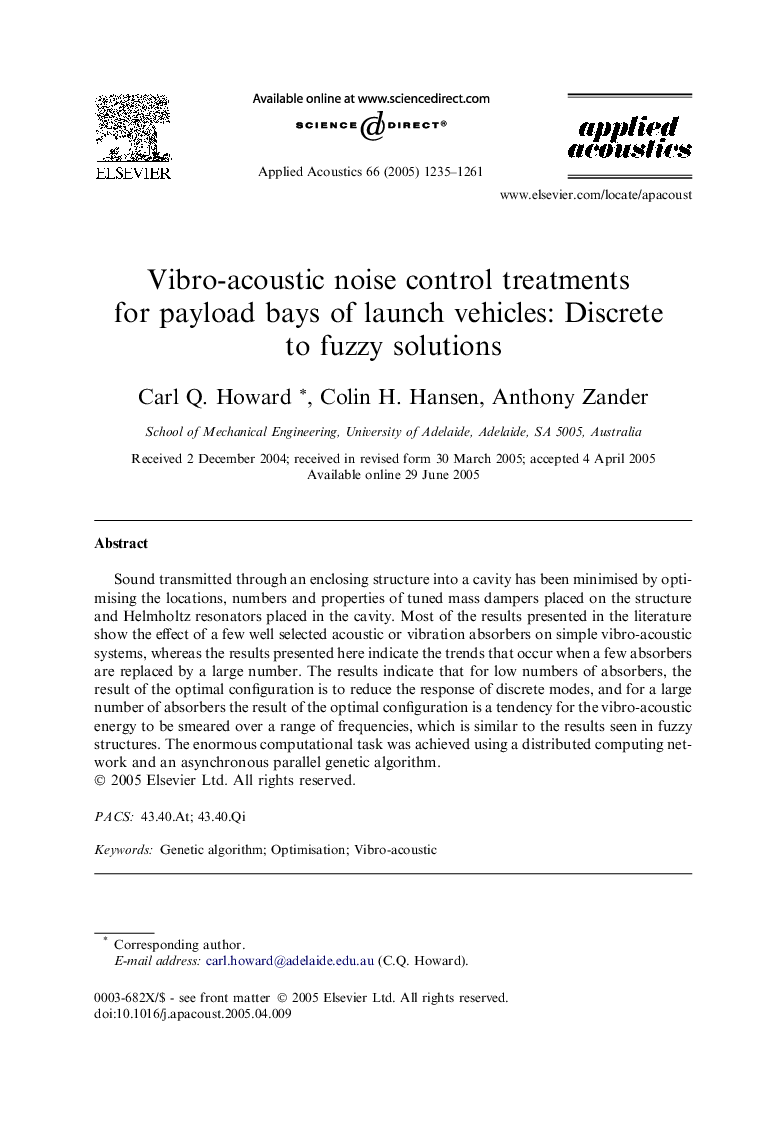| Article ID | Journal | Published Year | Pages | File Type |
|---|---|---|---|---|
| 10413694 | Applied Acoustics | 2005 | 27 Pages |
Abstract
Sound transmitted through an enclosing structure into a cavity has been minimised by optimising the locations, numbers and properties of tuned mass dampers placed on the structure and Helmholtz resonators placed in the cavity. Most of the results presented in the literature show the effect of a few well selected acoustic or vibration absorbers on simple vibro-acoustic systems, whereas the results presented here indicate the trends that occur when a few absorbers are replaced by a large number. The results indicate that for low numbers of absorbers, the result of the optimal configuration is to reduce the response of discrete modes, and for a large number of absorbers the result of the optimal configuration is a tendency for the vibro-acoustic energy to be smeared over a range of frequencies, which is similar to the results seen in fuzzy structures. The enormous computational task was achieved using a distributed computing network and an asynchronous parallel genetic algorithm.
Related Topics
Physical Sciences and Engineering
Engineering
Mechanical Engineering
Authors
Carl Q. Howard, Colin H. Hansen, Anthony Zander,
